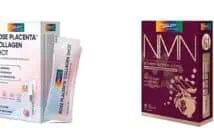When it comes to cosmetic treatments, Botox and facial fillers are two of the most popular options in any aesthetic clinic. Though both are designed to reduce signs of aging and enhance your appearance, they work in different ways. Let’s explore the differences between Botox and facial fillers so you can make an informed choice for your beauty needs.
What Is Botox?
Botox is a brand name for botulinum toxin, a substance that temporarily relaxes muscles. When Botox is injected into targeted facial muscles, it blocks nerve signals, stopping the muscles from contracting. This results in smoother skin and reduced wrinkles, particularly in areas like the forehead, between the eyebrows, and around the eyes.
The main use of Botox is to treat dynamic wrinkles. These are wrinkles that form due to repeated facial expressions, like frowning or squinting. Botox works by stopping the movement of these muscles – it smooths out the skin and reduces the appearance of wrinkles. The results typically last for 3 to 6 months.
What Are Facial Fillers?
Facial fillers, also known as dermal fillers, are substances injected under the skin to restore volume and smooth out wrinkles. Unlike Botox, which targets muscle movement, fillers are designed to replace lost volume in areas that have thinned with age. Common areas for facial fillers include the cheeks, under the eyes, nasolabial folds (smile lines), and lips.
Fillers are often made from hyaluronic acid, a substance naturally found in the skin that attracts moisture. Some fillers may also contain calcium hydroxyapatite or poly-L-lactic acid. The main purpose of facial fillers is to add fullness to the face. They reduce the appearance of static wrinkles—those that remain even when your face is at rest. The results of facial fillers can last from 6 months to 2 years, depending on the type of filler used and the area treated.
How Do Botox and Facial Fillers Differ?
The primary difference between botulinum toxin and facial fillers is the way they work. Botox targets muscle movement to prevent the formation of dynamic wrinkles. Facial fillers, on the other hand, restore lost volume to areas that have developed static wrinkles.
Another key difference is the areas they treat. Botox is most effective in areas where muscle movement causes wrinkles, such as the forehead, around the eyes, and between the eyebrows. Fillers are better suited for areas that have lost volume, such as the cheeks, under the eyes, or lips. Botox works by relaxing the muscles beneath the skin, while facial fillers add volume and fullness to the skin itself.
Which Treatment Is Right for You?
Choosing between Botox and facial fillers depends on the type of wrinkles you want to treat. If you are looking to smooth out wrinkles caused by facial expressions, Botox may be the best option for you. If you want to add volume to areas like your cheeks or lips, facial fillers are a better choice.
In some cases, a combination of both treatments can provide the best results. Many people choose to get Botox for their forehead and crow’s feet while using fillers to add volume to their cheeks or plump their lips.
Conclusion
Botox and facial fillers are both effective treatments for reducing the signs of aging, but they work in different ways. Botox relaxes the muscles to prevent dynamic wrinkles, while fillers restore volume to areas with static wrinkles. When deciding between the two, think about the areas you want to treat and the results you’re hoping for. Consulting with a qualified professional can help you determine the best approach to achieve your beauty goals.




